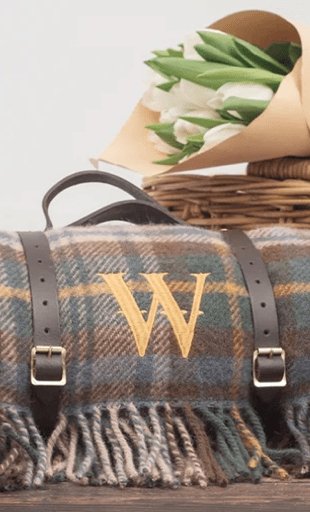
In celebration of the 50th anniversary of Earth Day today we are kicking off a series of guest blog posts that highlight some of the fabrics we use for our accessories and linens. In particular we want to raise awareness of the sustainable merits of some of our favourite fabrics: linen, palm leaf, sisal and jute. Not only do these plant fibres make excellent textiles due to their strength, dye-ability and natural beauty, but they also embroider exceedingly well. The texture and shimmer of embroidery works well with these textured fabrics and the stitches in our monogram designs move with the fabric, ensuring that the embroidery lasts for as long as the underlying product.
The Jute plant is native to India and Bangladesh, thriving in high humidity and a monsoon climate. The plants grows naturally and efficiently throughout the entire year by just standing in water.
The plant has long been relied upon for the strong fibres it produces. It reaches maturity after only six months, so it is plentiful and readily available. The central part of the woody plant is the source of the shiny fibres which are then spun into the strong threads that we see woven into fabric of many different kinds.
Needless to say, woven jute turns in to gorgeous bags which look incredible with a bold embroidered monogram, but that’s not the only reason we chose it for a selection of our bags here at Initially London. If you take a look at our lovely Brompton Tote, for example, you will see how beautiful and organic the finish is to the final material.
It looks so natural, strong and fibrous, and that’s because it is. Woven jute has always been a very versatile fabric due to this strength. Thin fibres of jute skin were even used to make sturdy hessian supply bags for soldiers during the First World War. We love it versatility, as it can be made in to various thicknesses and weaves such as the thick ropey plaits used for our Canonbury, Perivale and Hampton Bags...



...as well as thinner finer strands used for our Spitalfields and Chiswick Bags.
The jute plant's sustainability credentials are impressive. It absorbs large amounts of carbon dioxide from the atmosphere while growing. The plant rarely requires the interference of pesticides or fertiliser, unlike so many other fast-growing crops.
In addition jute is bio-degradable and compostable so when you are finished with your bag, just toss it on the compost heap!
We can't think of a more practical, sustainable and stylish approach to purchasing a bag.




Leave a comment